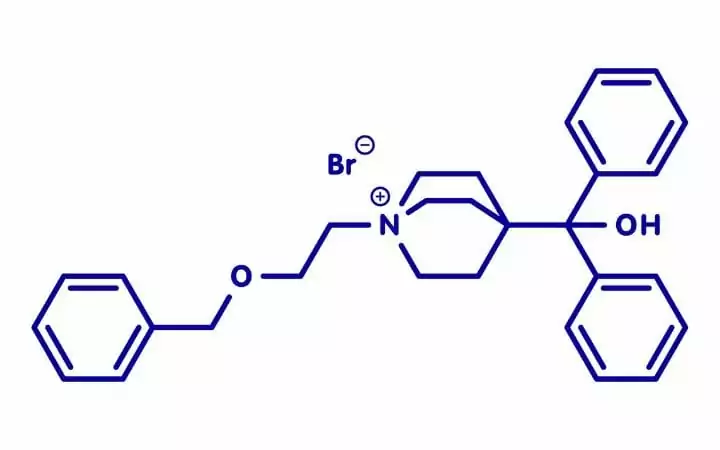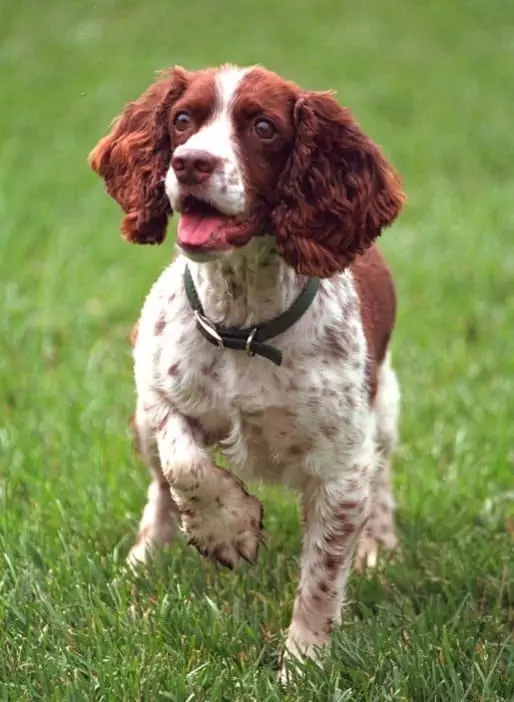Myasthenia Gravis is a condition that occurs in dogs, cats, and humans with apparent pathophysiological similarities between the species. There are two types of Myasthenia Gravis – congenital and acquired.
The disease manifests in a muscle weakness syndrome due to ACH (acetylcholine) receptors deficiency on the post-synaptic membranes.

Congenital Form of Myasthenia Gravis in Dogs
This form is a hereditary disorder that is considered to be breed-specific. Some of the breeds that are genetically predisposed to deficiency of Ach receptors on the postsynaptic membranes include Dachshunds, Jack Russell Terriers, Samoyeds, Smooth Fox Terriers, and Springer Spaniels.
Signs of the disease usually appear in dogs six to eight weeks of age. The exercise-associated generalized weakness of the muscles becomes apparent approximately at this age.
The severity of the muscle weakness tends to progress, soon enough resulting in tetraplegia and death. Spontaneous resolving of the congenital form of MG in Dachshunds has been reported.

Acquired Form of Myasthenia Gravis in Dogs
Antibody-mediated destruction of the acetylcholine receptors results in acquired or immune-mediated Myasthenia Gravis. It appears that the acquired form is age-related with the highest incidence of initial signs at two to four years of age and nine-13 years of age.
Breeds with a predisposition for acquired Myasthenia Gravis include Newfoundlanders, Akita, German Shepherds, Chihuahuas, and some terrier breeds.
The clinical signs can be variable and can be divided into focal muscle weakness and diffuse muscle weakness as a part of the generalized condition. In the first case most affected are the pharyngeal, esophageal, and facial muscles associated with signs of dysphagia, aphonia, and salivation.
A considerable percentage of patients with idiopathic mega-esophagus have been diagnosed with focal Myasthenia Gravis. The generalized condition can range from mild to severe. In some dogs, the disease manifests with exercise intolerance which gets better after some rest, while in some acute tetraplegia is a dominant sign.
Thoracic x-ray images describe pneumonia due to aspiration of fluids and the presence of a thymoma. This benign tumor of the thymus is sometimes associated with MG.
Acute Fulminant Myasthenia Gravis is also described where rapid-progressing tetraplegia and ventroflexia of the neck are evident. Also, the bladder is highly distended and the animal has trouble breathing due to the weakness of the responsible muscles.
This form is the hardest one to clinically manage.
Diagnosis of Myasthenia Gravis in Dogs
Besides anamnesis and routine clinical and neurological examination, few more diagnostics tools must be used to rule out similar diseases and give a final conclusion for MG. CBC, biochemical profile, and urine examination are always advisable, even though the postulates for diagnosing Myasthenia Gravis require much more.
EMG (Electromyogram) and NCV (Nerve Conduction Velocity) as part of the electrodiagnostic are much less reliable than SFEMG (Single-Fiber Electromyography).
Tensilon Response Test consists of IV administration of endrophonium chloride (1-10 mg) and observing the presence or absence of improvement of the presented clinical weakness of the patient. Edrophonium chloride inhibits the anticholinesterase activity; still, a positive test isn’t a definitive one, just highly suggested.
The ultimate ‘gold standard’ for Myasthenia Gravis diagnosis is using immunoprecipitation radioimmunoassay for acetylcholine antibody titers determination in a patient’s serum. In dogs, titers higher than 0.6 nmol/L make the test results positive. The reliability of the test is 98%.
Pathohistological examinations of nerve fibers and muscles and immunohistochemistry proceedings on neuromuscular junctions are sometimes performed but not as routine diagnostics.
Myasthenia in Dogs – Treatment
The optimal therapeutic process for dogs with acquired Myasthenia Gravis hasn’t been established and problems with spontaneous remissions are frequent in more than 80% of patients, after an average of four months.
Before starting the treatment it’s mandatory to recognize signs of pharyngeal weakness and esophageal dilation.
Specific therapy is used for patients that belong in one of the 3 groups characterized by the severity of the disease:
- Mild or focal Myasthenia Gravis
- Moderate or generalized Myasthenia Gravis
- Severe generalized or acute fulminating Myasthenia Gravis
Anticholinesterase agents are used as a medication in all the above-mentioned groups. The agents act to prolong the effect of acetylcholine at the neuromuscular junctions thus enhancing the neuromuscular transmission.
The dosage must be adjusted accordingly to the patient’s individual tolerance to the drugs, the response to treatment and the possible adverse effects. Pyridostigmine bromide (1-3 mg/kg, BID/TID P/O) and neostigmine bromide (2 mg/kg/d) are conventionally used drugs in this case.

The use of immunosuppressive agents is controversial and they should never be used as a first-line treatment. Optionally they can be added to anticholinesterase and supportive treatment where the response in the patients isn’t achieved.
Glucocorticoids are known to induce aspiration pneumonia in dogs and potentiate muscle weakness problems. Patients belonging to Groups 1 and 2 can be given a low dose of prednisone (0.5 mg/kg) every other day.
In patients with diabetes mellitus, severe obesity, aspiration pneumonia, gastrointestinal ulcerations, and hypertension the use of glucocorticoids is contraindicated, and instead, other types of immunosuppressive medications can be used (azathioprine, mycophenolate mofetil, cyclosporine).
TPE (Therapeutic Plasma Exchange) is an extra-corporeal procedure primarily used in humans with Myasthenia Gravis. It’s an apheresis procedure based on removing plasma with pathologic antibodies and exchanging it with donor plasma.
Trial treatments showed good results in dongs demonstrating aspiration pneumonia and megaesophagus whose state rapidly improved after three treatments.
The TPE is an expensive procedure, but considering the fast recovery rate and decreased incidence of secondary complications, it might just be a pocket-friendly option in comparison to conventional treatment (complications, hospitalization, and recurrence of signs).

Supportive care is recommended in dealing with aspiration pneumonia, fluid loss, malnutrition, respiratory distress, dysphagia, and regurgitation.
Prognosis and Outcome of Canine Myasthenia Gravis
As we mentioned before, recurrence of signs is a big problem, therefore, the prognosis for Myasthenia Gravis is dubious. Dogs with generalized conditions respond well to anticholinesterase and corticosteroid therapy. Cases with aspiration pneumonia and megaesophagus are much riskier to manage. A worst-case scenario is the Fulminant form of Myasthenia Gravis with a bad prognosis.
